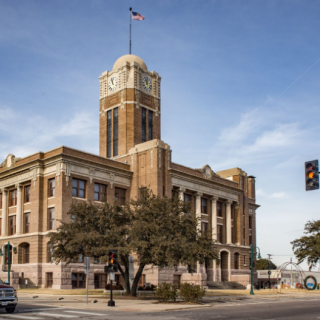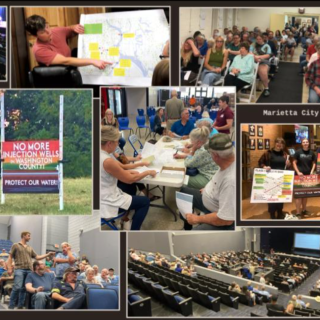Six weeks into Columbus’s self-declared “Summer of Safety,” the headlines are bloodier than the branding suggests. Two youth-involved mass shootings. A spike in gun seizures from teens. Millions of dollars spent—and still, no public accounting of whether any of it is working.
Columbus officials announced a historic $28.2 million investment in youth violence prevention this year. Yet despite repeated public records requests, direct interviews, and community testimony, it remains unclear how much of that money has been disbursed, who it has helped, and whether it’s had any impact on the escalating violence.
In Spring 2025, Mayor Andrew Ginther and Public Safety Director Kate McSweeney-Pishotti announced Columbus would allocate $28.2 million in federal and local funds for youth-focused summer programming. The stated goal: curb youth violence by investing in prevention, jobs, recreation, and mentorship.
“We have 112 programs that are receiving some level of funding, whether it be $5,000 or $500,000,” said McSweeney-Pishotti, in a July 10 interview with ABC6/FOX28 Columbus.
The announcement was accompanied by positive press coverage, community center ribbon cuttings, and b-roll of teenagers engaged in summer activities. But the city’s follow-through has not matched its media rollout.
To qualify for 2025 Summer Violence Prevention funds, organizations must:
- Be a 501(c)(3) nonprofit or educational institution
- Serve youth ages 5–18 in Columbus
- Run programming between May–September
- Focus on outcomes like academic performance, health and well-being, or job readiness
- Prioritize Opportunity Neighborhoods like Linden, Hilltop, Franklinton, South Side, and the Far East
The grant terms also include accountability requirements:
- 75 percent of funding is released up front
- The remaining 25% percent is held until grantees submit a mid-year progress report
- City grant managers are expected to perform on-site visits
- For the first time, parents and caregivers can provide feedback to the city on program quality
Despite this structure, there has been no public disclosure of which programs passed, failed, or even submitted these mid-year reports.
Despite the historic investment, some of Columbus’s most credible, results-driven organizations were underfunded—or denied funding entirely. Meanwhile, several newer or less-established groups received thousands in grants with little public record of impact.
Ralph Carter, founder and CEO of We Are Linden, initially felt frustrated when his organization didn’t receive any summer funding support he’d requested. But after reviewing the application process more closely, he acknowledged he’d missed some of the fine print.
“I knew going in that I might not get the max,” Carter said. “At the end of the day, I’ve got to stand on business for my community—with or without the city’s help. We were out here before the funds showed up, and we’ll be out here after.”
His sentiment echoes that of many longtime community leaders who say real violence prevention isn’t about grants—it’s about consistency, credibility, and being present year-round.
Joe Motil, a former mayoral candidate and longtime civic watchdog, remains skeptical about the structure of the city’s violence prevention office and the politics behind grant distribution.
“I never put a lot of faith into Ginther’s Office of Violence Prevention to begin with,” Motil said. “Politics and the ‘who’s who of Columbus non-profits’ has always taken precedence over deciding which non-profits receive public funding. The players have always received the bulk of funding while smaller non-profits, especially those who are not team players, get the crumbs—if they’re lucky.”
He also questioned the appointment of Office of Violence Prevention Director Rena Shak, calling her selection more political than strategic.
“Why hasn’t Ms. Shak’s office presented a report on the success and/or failures of the 112 community groups who received the $8.6 million portion of the $28 million? Where is the data?”
Motil emphasized that true violence prevention cannot be accomplished by summer grants alone.
“To address crime prevention and violence directly, I believe that Columbus must focus first on the underlying problems. Decent affordable housing, public education, jobs that pay a living wage, mental health care, 21st century transit and mobility, and reinvestment in our crumbling infrastructure.”
Between July 10 and July 23, this reporter submitted multiple public records requests to the Mayor’s Office, the Office of Violence Prevention (OVP), the Department of Public Safety, the City Auditor, the City Treasurer, Department of Neighborhoods and the Columbus Division of Police. The requests sought:
- A full disbursement ledger listing all 2025 grant recipients and amounts
- Mid-season outcome reports and youth participation numbers
- Incident reports for the June 15 (Bicentennial Park) and July 4 (Wilson Avenue) shootings
- Geocoded juvenile firearm seizure data (Jan–Jul 2025)
In a July 16 segment on ABC6 with reporter Steve Lavine, Mayor Ginther’s Deputy Chief of Staff Craig Connley assured viewers that all 112 community groups receiving funding were held to strict reporting standards, including mid-year outcome reports, site visits, and contract compliance. “They will conduct themselves in a way that’s consistent with what their application says,” Connley said, emphasizing new efforts to allow parents and caregivers to provide feedback on program quality.
But when The Columbus Free Press requested these very documents—along with a complete disbursement list and progress reports—City Hall departments either redirected, deflected, or denied having oversight.
The city responded with deflections and delays. The Mayor’s Office passed the request to OVP. OVP said it didn’t oversee the grant process and pointed to a general email address. CPD said all data must go through public records. Days later, no documents have been released.
City Hall departments offered fragmented and incomplete responses. The City Auditor and Treasurer’s offices both said they had no direct involvement in administering or tracking the summer grant funds. Beth Berkemer of the Department of Neighborhoods confirmed her office managed a smaller subset of workforce-related grants but had no master list or outcome summaries.
On June 15 and July 4, two separate mass shootings in Columbus left youth wounded and neighborhoods shaken. According to community advocates and police insiders, the number of firearms seized from juveniles this year is on track to exceed 2024 totals—though official data has not yet been released.
ABC6/FOX28 reported on July 16 that Columbus recorded 43 homicides so far this year. Of those, 25 suspects were under the age of 21. In addition, there were 435 felony assault cases, with 242 suspects under the age of 21.
Program leaders report a disturbing pattern: kids attend daytime programs funded by the city, then return to unsafe conditions or engage in high-risk behavior after programming ends.
One source who requested anonymity said:
“One thing we have noticed as youth workers is that criminality is getting younger and younger. Mix in an unlimited number of guns and cars which can be stolen with a phone charger, and you get a fast-moving crisis the community can't get ahead of.”
Several organization leaders who did receive city funding told The Columbus Free Press they would only speak off the record. Due to journalistic ethics, the contents of those interviews—while highly relevant—remain confidential.
Though city officials mandated mid-season outcome reports by July 15, no reports have been made public. There is no dashboard. No master list of participants served. No metrics that show whether $28.2 million is saving lives—or just funding headlines.
Community-based organizations say that if Columbus wants results, it must invest in trusted institutions already embedded in the neighborhoods—and not just during summer months. Some leaders suggest the current funding approach is more performance than prevention.
At every level, city officials have redirected, delayed, or dismissed efforts to track how this $28 million is working. The Office of Violence Prevention declined to answer questions, and no city agency has taken full ownership of outcomes.
What Columbus is left with is a public health crisis funded by mystery money—and a community still searching for answers as the summer violence continues.



